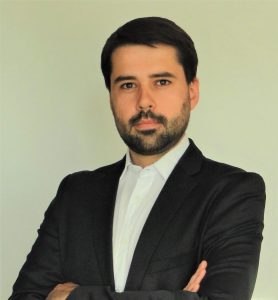 Speaker: Jurij Koruza, Institute for Chemistry and Technology of Materials, Graz University of Technology, Graz, Austria
Speaker: Jurij Koruza, Institute for Chemistry and Technology of Materials, Graz University of Technology, Graz, Austria
Title: Controlling the functional properties of ferroelectrics by multidimensional defects
Abstract: Ferroelectric materials are widely used as capacitors, sensors, actuators or transducers, which enable a range of modern technologies in microrobotics, consumer electronics, autonomous vehicles, medicine, and other fields [1]. Their dielectric and electromechanical properties are defined by their crystal lattice and the dynamics of ferroelectric domains. Historically, material scientist have predominantly focused on improving these properties by chemical modifications, i.e., formation of solid solutions or chemical doping. Microstructural elements and defects have typically been considered as culprits that decrease the functional response.
In this talk, I will present a set of examples demonstrating how microstructural elements can be utilized to favourably tune the dielectric, ferroelectric, and piezoelectric properties. Anisometric pores were designed to adjust the local electric fields and obtain piezoelectrics with a relative density as low as 66 %, but with comparable piezoelectric coefficients to their dense counterparts [2]. Secondary phases placed at grain boundaries enabled to increase the depolarization temperature of the relaxor ferroelectrics and at the same time reduce the losses, resulting in hard piezoceramics for high-power applications [3]. In another example, a novel precipitation process introduced secondary phases into the grains of ferroelectric (Ba,Ca)TiO3, which refined the domain structure and impeded the movement of the domain walls, rendering a large increase in the mechanical quality factor [4]. The final example entails a mechanical imprint of dislocation structures into ferroelectrics [5]. This resulted in pinned domain structures at low electric fields and depinning at intermediate fields. The rigid dislocation structure imposed a macroscopic restoring force on the domains, which made the domain wall displacement reversible and thus greatly increased the dielectric and piezoelectric response.
Bio: Jurij Koruza received the Diploma degree from the University of Ljubljana, Slovenia, in 2008, and the Ph.D. degree in nanosciences and nanotechnology from Jožef Stefan International Postgraduate School, Ljubljana, Slovenia, in 2013. Afterwards he joined the Department of Materials Science at the TU Darmstadt, Germany, where he was Junior leader of the group “Processing of ferroelectrics”, within the group of Professor Jürgen Rödel. Since 2021 he holds a tenure track professorship (Assist. Prof.) at the Graz University of Technology in Austria.
His main research interests include processing of electroceramics, phase transitions, and processing–structure–properties relationships in ferroelectrics. Dr. Koruza is a member of the European and American Ceramic Societies, senior member of IEEE, as well as member of the Electroceramics International Committee. He is also an editor with the Materials Letters journal. For his work, he has received the Athene Young Investigator award in 2017 and the Dr. Hans Messer Foundation prize in 2020.
Seminar Host: Martin Thuo
Zoom link: https://iastate.zoom.us/j/99768377208